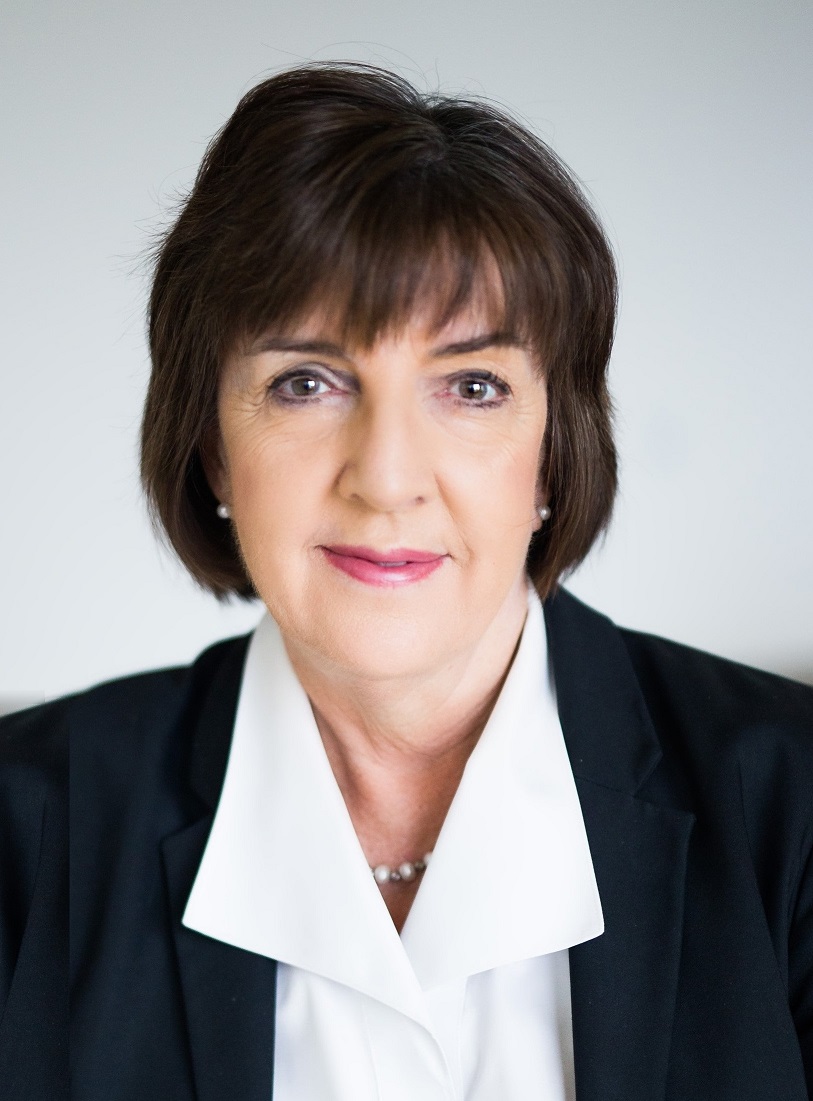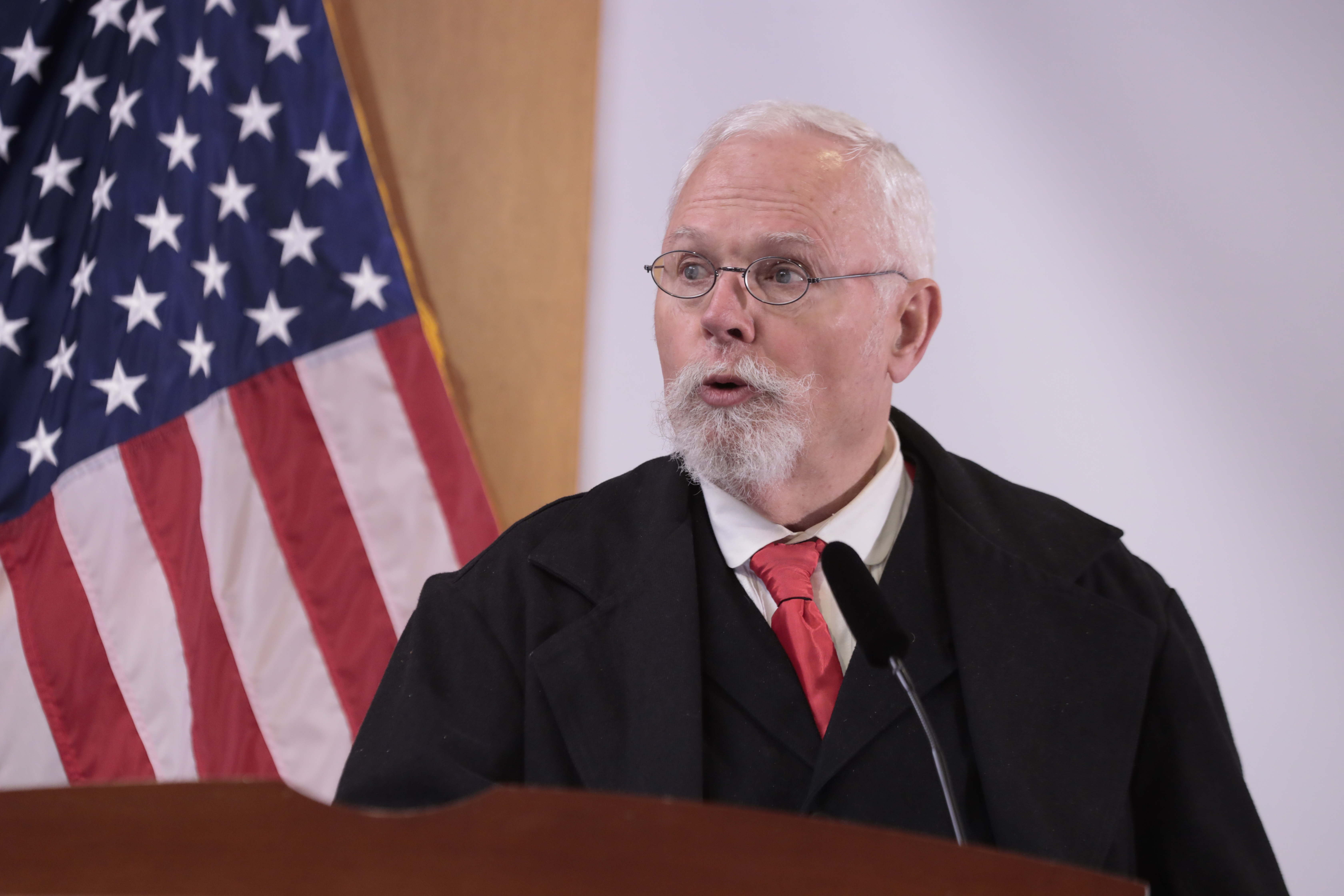Century of Care: How the OHA Has Evolved in 100 Years, and Where it Goes Next
Posted on: 6/14/19

In late May, a packed room of hospital administrators and employees met at the Oklahoma History Center to recognize the Oklahoma Hospital Association’s 100-year anniversary. The crowd celebrated recent OHA-led accomplishments and victories, issued proclamations of thanks to its founding member-institutions, and even watched a reenactment of a rousing speech by OHA’s first president,
Fred Clinton, explaining the need to create a new trade organization for hospitals.
As Dr. Clinton eloquently phrased it at the first meeting of the OHA in 1919, held in Muskogee:
“The great objects of a hospital are care, cure and education of the sick; the training of physicians and nurses; the extension of medical knowledge and prevention of disease. The purpose of the proposed organization of the hospitals of the State of Oklahoma is to promote the welfare of the people so far as it may be done by the institution, care and management of hospitals and dispensaries with efficiency and economy, to aid in procuring the cooperation of all organizations with aims and objects similar to those of this Association; and in general, to do all things which may best promote hospital efficiency.”
Although much has changed since, Dr. Clinton’s rationale for founding and sustaining the OHA seem as true today as they were 100 years ago. We sat down with current OHA President
Patti Davis to get her take on the origins of the OHA, the evolution of hospitals and health care, and her vision for the association as it enters a new century of advocacy and education.
The OHA just turned 100, so let’s start at the beginning. What was happening in 1919 in Oklahoma and in the health care world?
For most of human history, wealthy and even middle-class people didn’t go to hospitals to seek medical treatment. Instead, they had physicians visit them in their homes or they relied on family care. In rural, agrarian settings, multiple generations of families often lived together. The younger, healthier family members took care of the elderly and sick as best they could.
Hospitals in the pre-industrialized world, on the other hand, were like alms houses for the poor, the homeless and the mentally ill. They were mostly staffed by religious organizations instead of medical professionals.
Industrialization changed that as people began to move to cities and more densely populated areas. Fewer extended families living together made the old model of in-home care much harder. At the same time, medical science was growing by leaps and bounds.
Florence Nightingale was helping to introduce and popularize the idea of a professional, well-trained nursing workforce in the early and mid-19th century; hospitals were successfully deploying anesthesia to help perform surgeries; and medical training was becoming more professional and precise. The demand for the modern hospital was clear; and the medical community finally had the workforce and science it needed to meet that demand.
By 1919, hospitals in Oklahoma weren’t only charity organizations run by volunteers; they were professional institutions underpinning the delivery of health care in Oklahoma. The formation of the Oklahoma Hospital Association was a natural result of that progress within the health care field and a more industrialized society.
The world has changed a lot in 100 years. Has the mission of the OHA?
When you read what Fred Clinton was saying in 1919, you can tell that in many ways the OHA hasn’t changed at all. We are still working for “care, cure and education of the sick.” We are still working to help hospitals promote the welfare of our people and to ensure that individual institutions are working cooperatively toward that goal. We do that by sharing best
 |
| An actor reenacts the speech given by Dr. Fred Clinton at the first
meeting of the Oklahoma Hospital Association on May 21, 1919 |
practices and resources, constantly educating ourselves and members about new technologies and new developments within health care.
Of course, the way we do that today is more sophisticated than it was 100 years ago. For instance, we now have an entire department dedicated to helping our member hospitals improve the quality of care they provide. We are harnessing the collective power that comes with being able to provide experts from all over the state to work on collective issues.
So, the OHA is largely performing the same mission but in a new environment. What makes today’s health care landscape dramatically different than it was 100 years ago?
What has changed dramatically – beyond improvements in medical science – is the creation of Medicare and Medicaid during the Johnson administration in the 1960s.
It’s hard to ove
rstate the difference this has made. Before Medicare and Medicaid, people over 65 found it virtually impossible to get health insurance. A lot of seniors were simply unable to afford the care they needed and endured sickness and suffering; others scraped by, but at the cost of eventually bankrupting themselves and their families in the process. Think of having to sell grandma’s farm to pay for grandma’s care.
The creation of Medicare and Medicaid changed everything. First, and most importantly, it increased the quality of life, the health and the life expectancy of seniors. Second, it greatly enhanced the ability of one generation to pass on wealth to another. Third, it funded additional payments to help train physicians through graduate medical education programs, allowing us to turn out a steady supply of highly trained medical professionals. Finally, it had positive social consequences; along with the Civil Rights Act of 1964, it worked to desegregate the provision of hospital services.
Today, the Medicare and Medicaid programs are extremely popular and, frankly, are things we take for granted. It’s interesting to remember that, at the time, they were controversial proposals and their passage was no sure thing. They stand as a great example of how political leadership really can impact the trajectory of health outcomes and change (or even save) people’s lives. We are at a similar crossroads today when it comes to the issue of accepting federal funds in Oklahoma to reduce our very high rate of uninsured residents. I hope our leaders take this same kind of big and bold approach to improving health care.
That brings us to our next question: What are OHA’s biggest goals as it enters its second century of existence?
Our most immediate and urgent need is to reduce the uninsured rate in Oklahoma. We have the second highest uninsured rate in the nation. Families without insurance face economic devastation when someone gets sick. They also consistently miss out on the kind of preventive medicine that can save lives and ultimately drive down the cost of care. Basically, the very high rate of uninsured Oklahomans is making us sicker and poorer.
The solution is simple: we can accept federal funds to help provide more Oklahomans with insurance. There is an initiative petition out there to do just that, which we support.
Gov. Stitt has also said he will introduce his own plan, which we are eager to see. We applaud the governor’s goal of being a Top Ten state for health care; but we certainly can’t get there being rock-bottom in our rate of insured residents.
Beyond the need to address insurance, we need to focus on workforce development. We already have shortages when it comes to training of primary care physicians, nurses and other medical staff. That’s going to get worse given the fact that 10,000 people a day in the U.S. are turning 65. It’s a demographic certainty. People are living longer because of improvements in technology and in research, which means there is a much greater demand for services. We can and should find a way to meet this demand by supporting all the various public and private programs and schools that train our doctors, nurses and other medical professionals.